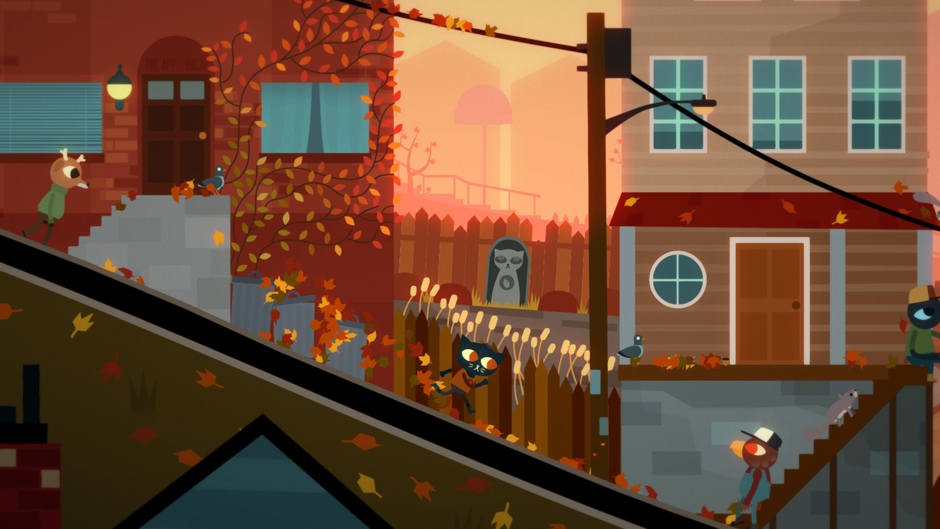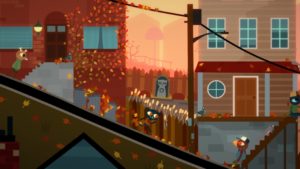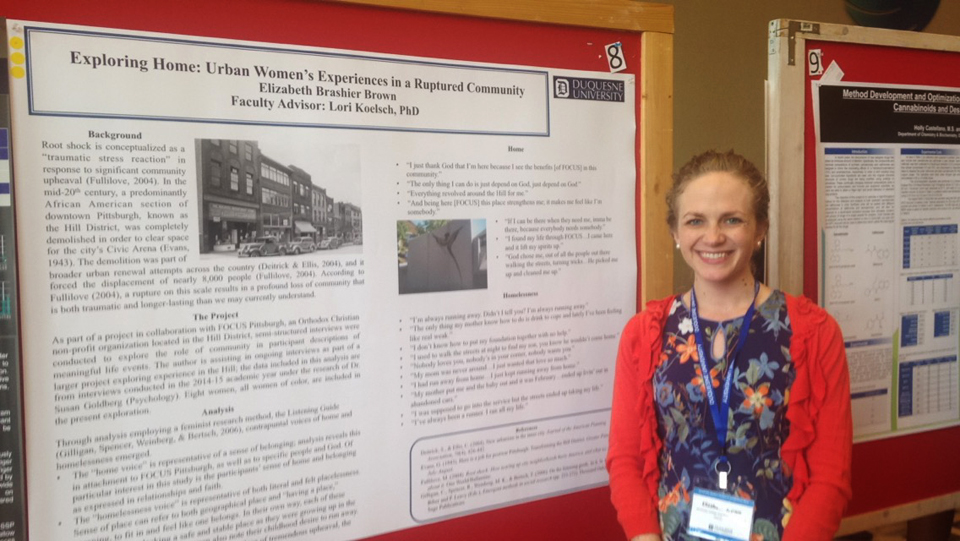

“Night in the Woods” was funded via the popular crowdfunding platform, Kickstarter. The game received 400 percent of its $50,000 goal. The developer has also released two suplementary games, titled “Longest Night” and “Lost Constellation.”
By Nicole Prieto | Staff Writer
Anthropomorphic cat Mae Borowski is 20 years old and just dropped out of college. She returns home to the fictional Possum Springs in late October, a once thriving mining town now going through hard times. But she soon finds that the town has changed since she first left. Bizarre disappearances, a mysteriously severed limb and troubling visions wrack Mae and her home, where she and her friends find themselves in the middle of a mystery that might just lead to the end of the world.
Created by Alec Holowka and Pennsylvanians Scott Benson and Bethany Hockenberry, “Night in the Woods” is a side-scrolling indie game that highlights life in the Rust Belt. Do not be fooled by the array of cute animals and cartoonish packaging. From mental illness to sexual assault, homelessness to drug addiction and ghosts to Elder-God-esque beings, the writing embraces difficult, painful topics alongside the supernatural. The game proffers a satisfying, cathartic experience for players willing to dive into Possum Springs’ darker corners.
Despite its serious elements, however, the game maintains a playful atmosphere. Notably, gamers can perform a variety of unrealistic, “Super-Mario”-style acrobatics. Mae’s preferred mode of travel involves copious amounts of running and hopping across rooftops, mailboxes, trees, railings, trash cans and power lines — whether awake or in her dreams. Players can break into buildings, break things in general, play in a band and party the night away with Mae’s ex-best friend (Bea), current best friend (Gregg) and Gregg’s boyfriend (Angus). And sometimes a guy named Germ.
The graphics play fine on a non-gaming PC laptop without much lag, though overheating could be a problem. For a side-scroller, the controls are surprisingly difficult to manage on a technical level. The biggest obstacle is getting Mae onto a surface she should otherwise be able to reach. Near the beginning, I was stuck in one area slamming the spacebar and leaping in every direction before I could finally get Mae on an object. Interactive surfaces are seamlessly integrated with the background and foreground; while stylistically attractive, this can make early playthroughs frustrating.
Against a backdrop of light cartoon chaos, the game invites players to soak in the rich, screenshot-able scenery and chill soundtrack. Sit in abandoned buildings and cause chaos in a dying mall. Interact with townspeople to reveal their own depths and backstories — and take some time to talk with Mae’s parents every day when they are at home. While its mechanics are to be desired, the game’s narrative and character development are its greatest strengths.
Choosing who to spend time with affects how you experience the overarching story. I focussed on Bea’s backstory for my first playthrough (achievement or story completionists will need to go through the game more than once). In contrast to Mae’s unbridled, jobless freedom, Bea runs her family’s business and supports her dejected father. Her resentment at Mae getting to go to college and dropping out is no secret, and it is easy to see why Bea is billed as Mae’s former best friend. If you choose to hang out with her every night, the pair alternate between getting along and fighting.
Nevertheless, whether you hang with Bea, Gregg or local oddball Germ, where the story is headed is a foregone conclusion. Your choices primarily determine the entries that appear in Mae’s journal and what relationships she fosters or neglects.
With respect to Mae, the paranormal goings-on in Possum Springs do not seem as pressing for her as her ominous dreams and adventures would lead gamers to believe. She is reasonably freaked out at finding someone’s arm on a sidewalk, for instance, but that does not stop her from sleeping in past noon every day and contemplating how to kill time until the evening rolls in. In this respect, the game does a good job of juxtaposing the extraordinary with the down-to-earth. Mae is not your traditional “chosen hero.” She is a 20-something who only wants to eat pizza, catch up with friends… and dodge questions about her future.
Still, she is definitely not a character to write off. For being the protagonist, Mae’s motivations are the most subtly presented. The slow-paced revelations about why she dropped out of college and returned home give the game enormous depth. Her personal story inspires some soul-searching and forces players to examine the assumptions we make about others.
“Night in the Woods” is clearly a labor of love with a universal message about moving forward with hope, no matter how out of control everything may seem. It is a post-coming-of-age story meant to hit close to home, and it does not proselytize clean solutions to the awful things that happen in life. Give it a try, and see where the denizens of Possum Springs take you.




